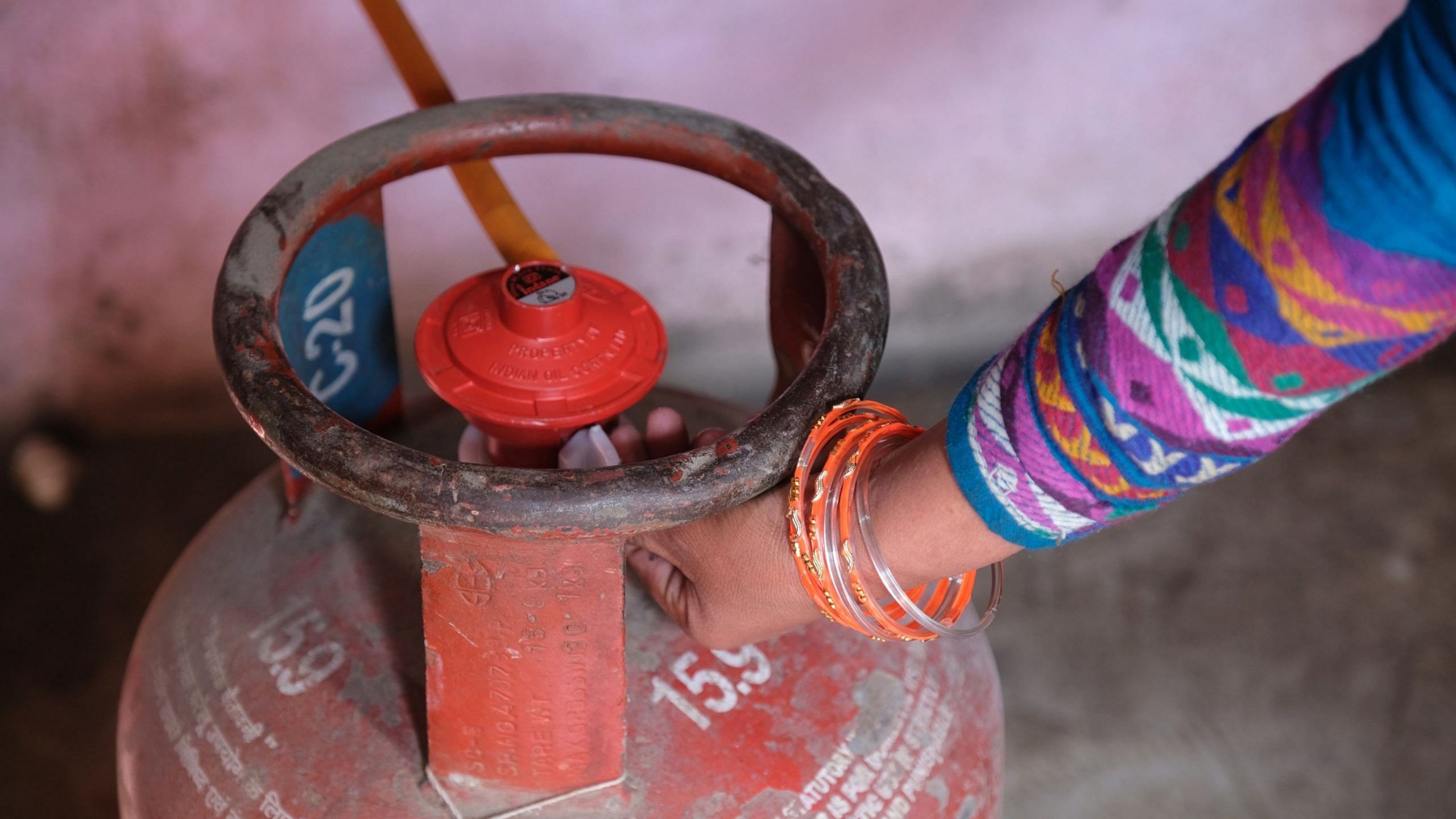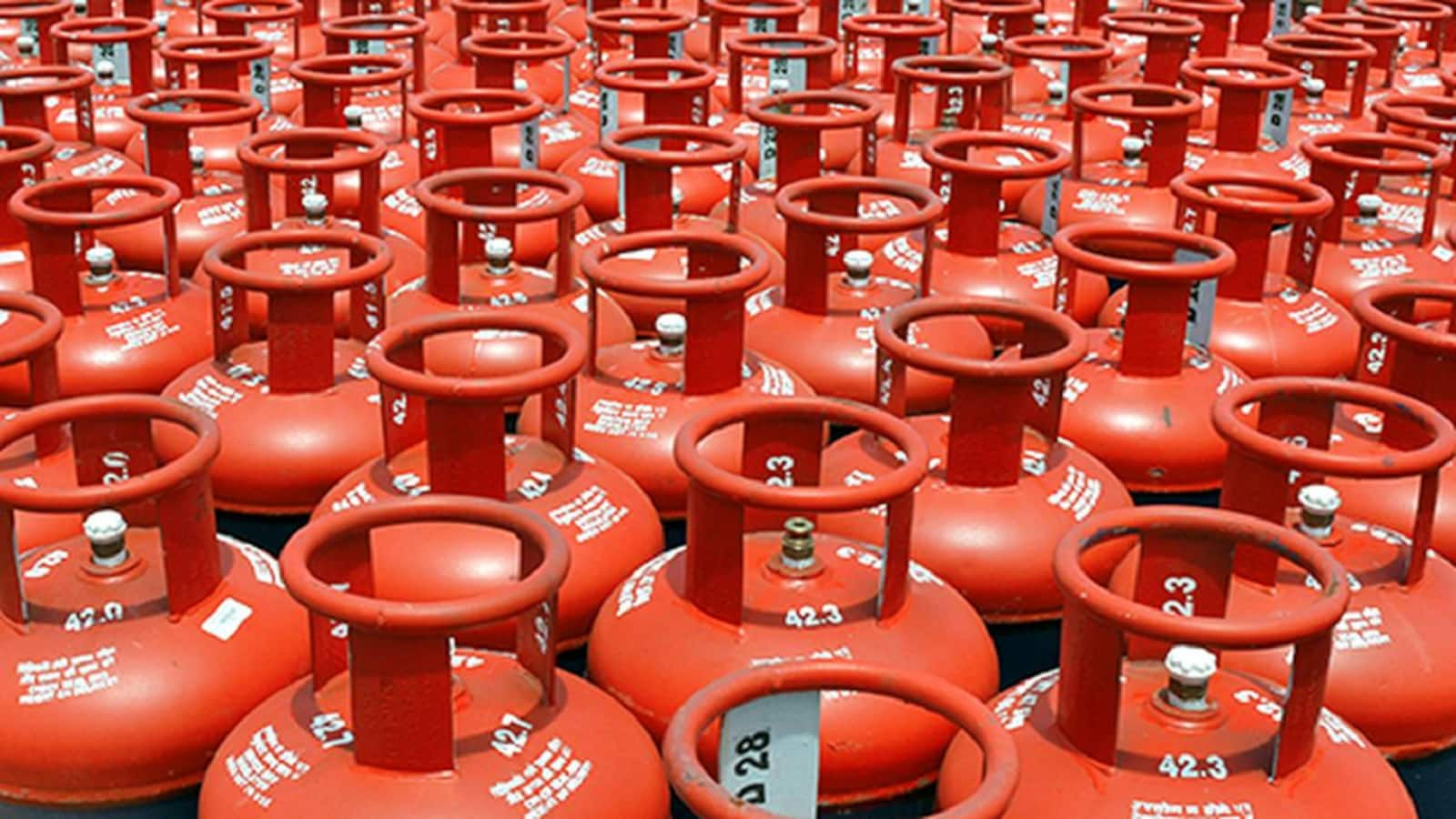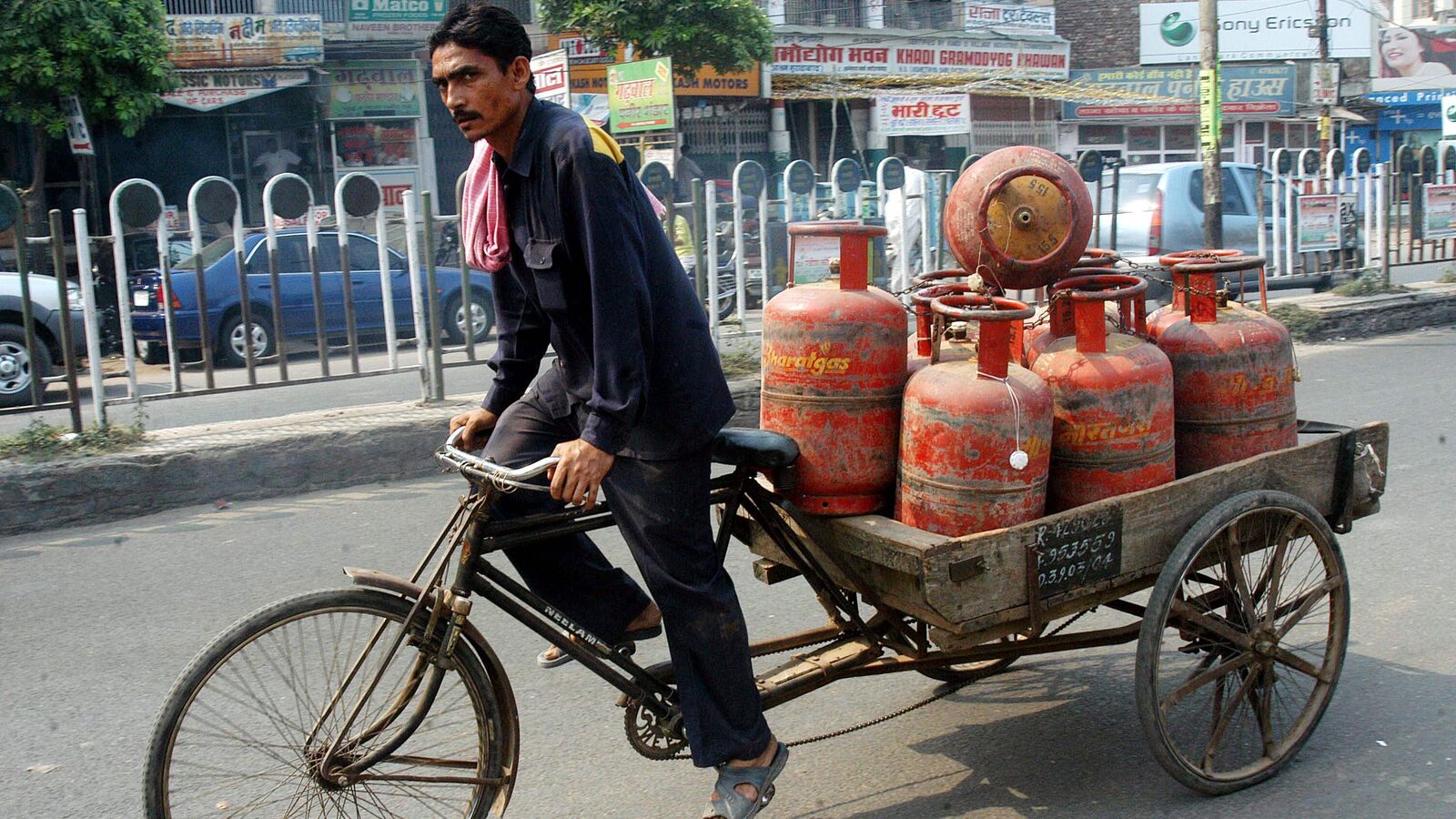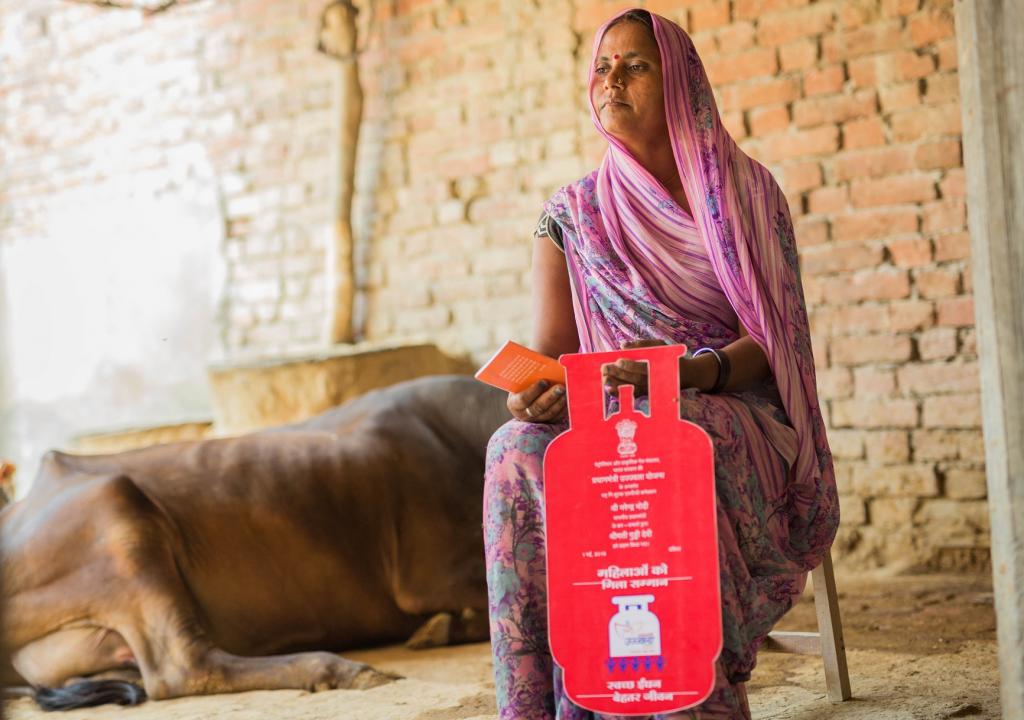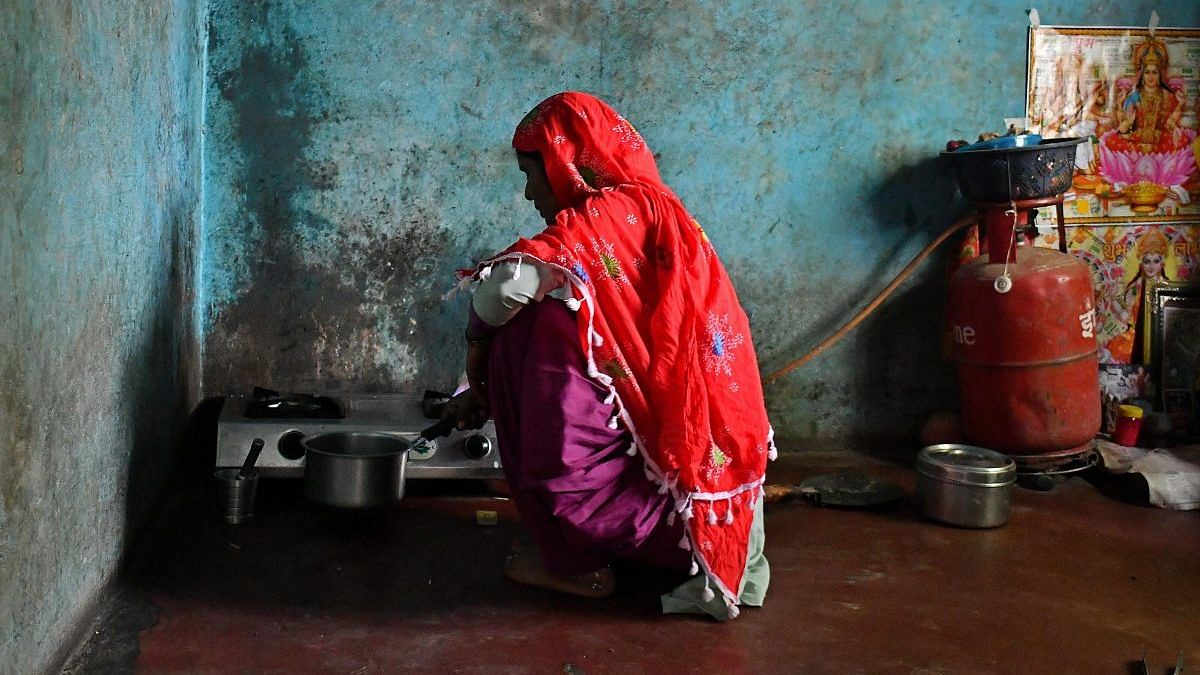In the run-up to the upcoming general elections, Prime Minister Narendra Modi made a significant announcement on Friday regarding a reduction in the prices of domestic LPG cylinders by ₹100. This move aligns with the timing of International Women’s Day, a globally recognised event celebrated on March 8 each year.
The recent reduction in cooking gas prices marks the second instance of such a cut within a span of six months.
In a tweet, the Prime Minister stated, ‘Today, on Women’s Day, our government has taken the decision to lower LPG cylinder prices by Rs 100. This step is aimed at providing substantial relief to numerous households nationwide, particularly benefiting our Nari Shakti.’
‘By making cooking gas more affordable, we also aim to support the well-being of families and ensure a healthier environment. This is in line with our commitment to empowering women and ensuring ‘ease of living’ for them,’ he said.
The recent reduction in cooking gas prices marks the second instance of such a cut within a span of six months. Earlier in the current fiscal year, the government announced a reduction of Rs 200 per cylinder on August 29, just ahead of the Assembly polls in five states. Alongside this price reduction, the government also pledged to provide an additional 75 lakh connections under the Pradhan Mantri Ujjwala Yojana (PMUY), bringing the total number of beneficiaries to 10.35 crore in phased increments. Subsequently, in October, the government further bolstered support by increasing the PMUY subsidy by 50%, raising it to Rs 300 per cylinder.
On August 30, 2023, the price cut for domestic LPG cylinders was implemented across all markets, resulting in a reduction of Rs 200 per cylinder.
On August 30, 2023, the price cut for domestic LPG cylinders was implemented across all markets, resulting in a reduction of Rs 200 per cylinder. For instance, in Delhi, this decision brought down the cost of a 14.2 kg cylinder to Rs 903 per cylinder, providing substantial relief to households amid economic challenges. These strategic measures not only aim to mitigate financial burdens but also underscore the government’s commitment to enhancing accessibility to clean cooking fuel for millions of households across the country.
Data from the National Sample Survey Office (NSSO) reveals that LPG serves as the main energy source for approximately 50% of rural households and nearly 90% of urban households nationwide. This highlights the widespread reliance on LPG as a crucial fuel for cooking purposes across various regions in India.
According to the latest government data, there has been a notable increase in average LPG consumption among Pradhan Mantri Ujjwala Yojana (PMUY) consumers. The data indicates a 29% rise in consumption, from an average of 3.01 refills in FY20 to 3.87 refills (till January 2024), prorated for the current fiscal year.
The Ujjwala scheme
The announcement regarding the reduction in LPG prices coincided with the Union Cabinet’s approval of the continuation of the Pradhan Mantri Ujjwala Yojana (PMUY) subsidy for the fiscal year 2024-25 (FY25). The subsidy, estimated at a cost of Rs 12,000 crore, provides Rs 300 per 14.2-kg cylinder to eligible beneficiaries.
PMUY, launched as a flagship scheme in May 2022, aims to ensure access to clean cooking fuel, particularly LPG, for rural and underprivileged households. These households traditionally relied on less efficient and more polluting fuels like firewood, coal, cow dung, and cakes for cooking purposes.
Initially catering to 90 million beneficiaries with a provision of up to 12 refills for the fiscal year 2022-23, the scheme saw an extension of its subsidy until March 2023, incurring a total cost of Rs 7,680 crore.
In October of the previous year, the government augmented its support under the Pradhan Mantri Ujjwala Yojana (PMUY) by increasing the subsidy from Rs 200 to Rs 300 per cylinder. This move aimed to further alleviate the financial burden on households and promote the use of clean cooking fuel, particularly LPG, among beneficiaries of the scheme.
Recent data from the National Sample Survey Office (NSSO) underscores the significant role of LPG as the primary energy source for approximately 50% of rural households and nearly 90% of urban households across India.
Recent data from the National Sample Survey Office (NSSO) underscores the significant role of LPG as the primary energy source for approximately 50% of rural households and nearly 90% of urban households across India. Furthermore, the latest government statistics reveal a substantial 29% increase in the average LPG consumption among PMUY consumers, rising from 3.01 refills in FY20 to 3.87 refills by January 2024, prorated for FY24.
Based on estimates derived from FY23 data, non-PMUY consumers accounted for nearly 145 crore cylinder refills, while PMUY beneficiaries utilised around 36 crore refills, resulting in a total consumption of approximately 181 crore refills. Assuming consistent refill rates and consumer base from FY23, the financial impact of the recent LPG price reduction is projected to be approximately Rs 18,100 crore on an annualised basis
Is this significant or just a political gimmick before the upcoming elections?
Congress leader Randeep Surjewala criticised the recent announcement of LPG price reduction as an ‘election gimmick,’ highlighting the difference in approach between the current government and the Congress-UPA administration. Surjewala pointed out that during the Congress-UPA era, LPG was procured at international prices, which were 28% higher than the current rates. However, substantial subsidies ensured that consumers were charged significantly less, ranging from ₹399 to ₹414 per cylinder.
Surjewala contrasted this with the present scenario, where the government purchases LPG at ₹740 per cylinder but imposes charges ranging from ₹900 to ₹1,000 on consumers. This discrepancy led him to label the reduction in LPG prices as a mere token gesture.
Similarly, the Trinamool Congress, the ruling party in West Bengal, criticised the price reduction as a ‘token cut’ and dismissed it as a ‘cheap political stunt.’ These reactions underscore the political discourse surrounding economic policies and the differing perspectives on the impact of such measures on the general public.
During the launch of Ujjwala 2.0, the second phase of the Pradhan Mantri Ujjwala Yojana (PMUY), political leaders such as Priyanka Gandhi raised questions regarding the government’s handling of gas cylinder prices. In a Facebook post in Hindi, Priyanka Gandhi directly addressed the Prime Minister, questioning the rationale behind doubling gas cylinder prices over the past seven years and implementing a Rs 240 hike during a period of economic hardship.
Priyanka Gandhi also highlighted the impact of escalating gas cylinder prices on households, noting that approximately 90% of cylinders were left unused, forcing many to resort to cooking with firewood due to financial constraints. She criticised the government for discontinuing subsidies for low-income individuals, emphasising the need for affordable gas cylinders for the poor rather than empty promises.
Priyanka Gandhi also highlighted the impact of escalating gas cylinder prices on households, noting that approximately 90% of cylinders were left unused, forcing many to resort to cooking with firewood due to financial constraints.
Congress’ chief spokesperson Randeep Surjewala echoed similar sentiments, describing the Ujjwala scheme, which offered gas cylinders at Rs 888, as yet another ineffective government measure that failed to benefit those in need. These statements reflect ongoing concerns and criticisms regarding the accessibility and affordability of essential resources for vulnerable populations.
‘In the last seven years, the Modi government has doubled the price of the LPG cylinder by eliminating the subsidy on gas cylinders, making LPG completely out of the reach of the common people and the poor,’ Surjewala said.
‘The Jumla government has to understand that the people of the country are very intelligent, and they want relief, not jumla (rhetoric)’. It is our demand that the price of subsidised LPG cylinder should be reduced by half immediately to Rs 400 per cylinder as it was at the time of the Congress government in 2014,’ the Congress general secretary said.
LPG cylinder prices slashed on women’s day: the problematic implications
The state’s decision to grant a subsidy on gas cylinders as a Women’s Day gesture reiterates and perpetuates traditional gender roles associated with household chores for women.
Renowned feminist scholars such as Judith Butler and Simone de Beauvoir have extensively examined the construction of gender identities and the role of societal institutions in perpetuating these norms. Butler’s concept of gender performativity posits that gender is not an inherent trait but rather a social construct that individuals perform and reproduce through their actions. This performance is heavily influenced by societal expectations and norms, including the division of labour in domestic settings.
The state’s gesture of offering a subsidy on gas cylinders to women on Women’s Day inadvertently reinforces these gendered expectations by framing it as a gift tied to domestic responsibilities.
Simone de Beauvoir’s seminal work The Second Sex delves into the concept of women being assigned the role of the ‘Other’ in patriarchal societies, where their worth is often tied to their performance of traditional roles such as caregiving and housework. The state’s gesture of offering a subsidy on gas cylinders to women on Women’s Day inadvertently reinforces these gendered expectations by framing it as a gift tied to domestic responsibilities. This not only perpetuates the unequal distribution of labour within households but also reinforces the idea that women’s contributions primarily revolve around domestic duties.
In essence, the subsidisation of gas cylinders, while well-intentioned, serves as a stark reminder of the entrenched gender roles that continue to shape societal expectations. It underscores the importance of challenging these norms and working towards a more equitable distribution of responsibilities and opportunities regardless of gender.
About the author(s)
Anuj is an urban practitioner and an independent writer. He's mostly interested in Feminist Urbanism and the intersection of various identities in the urban. He is a graduate of the Indian Institute for Human Settlements and has disciplinary training in Urban and Regional planning.
